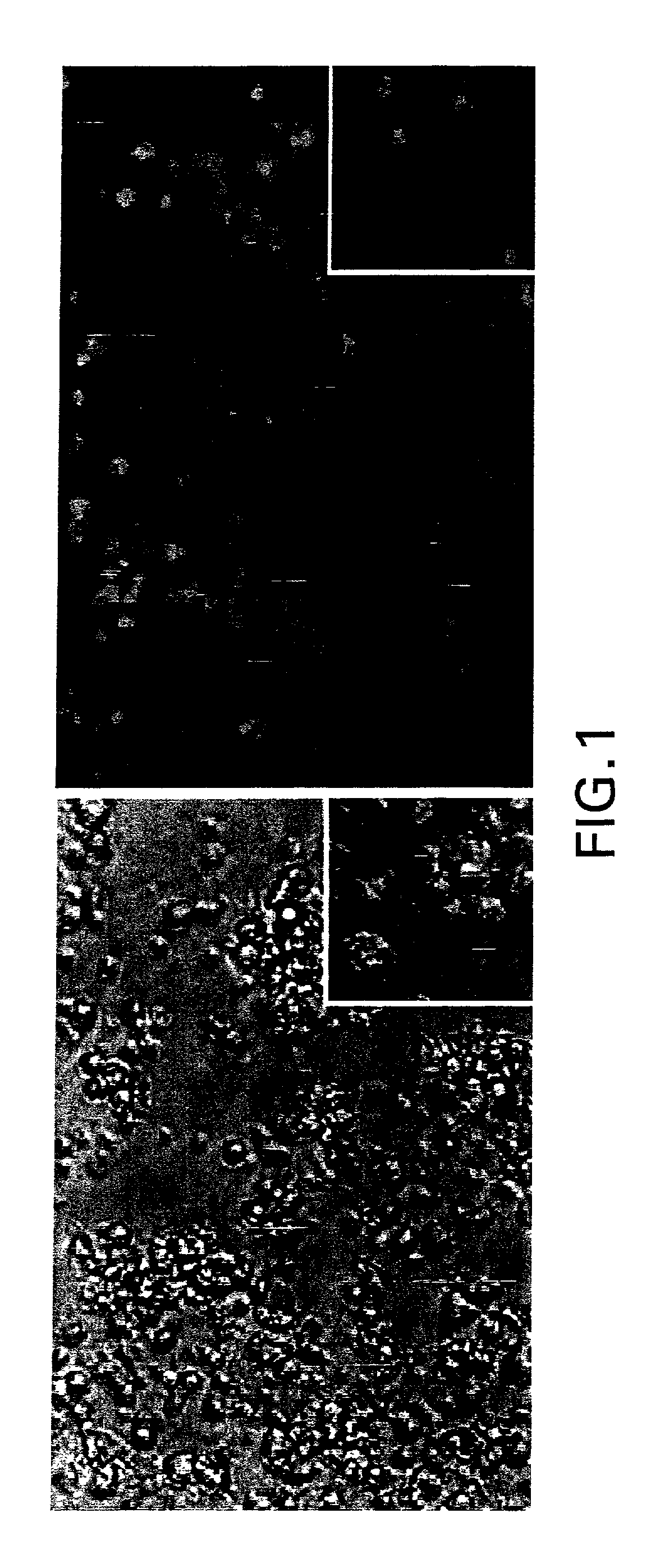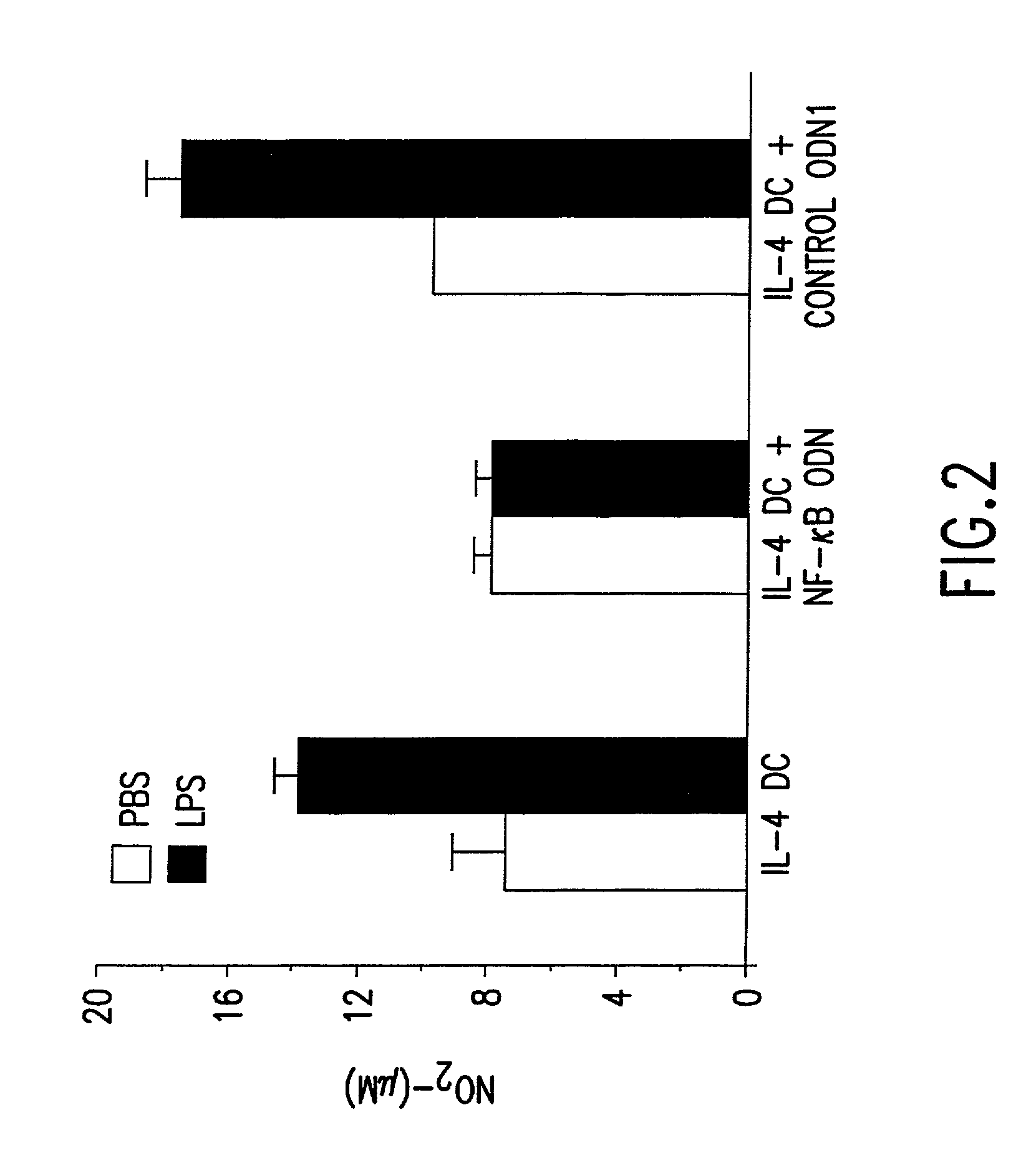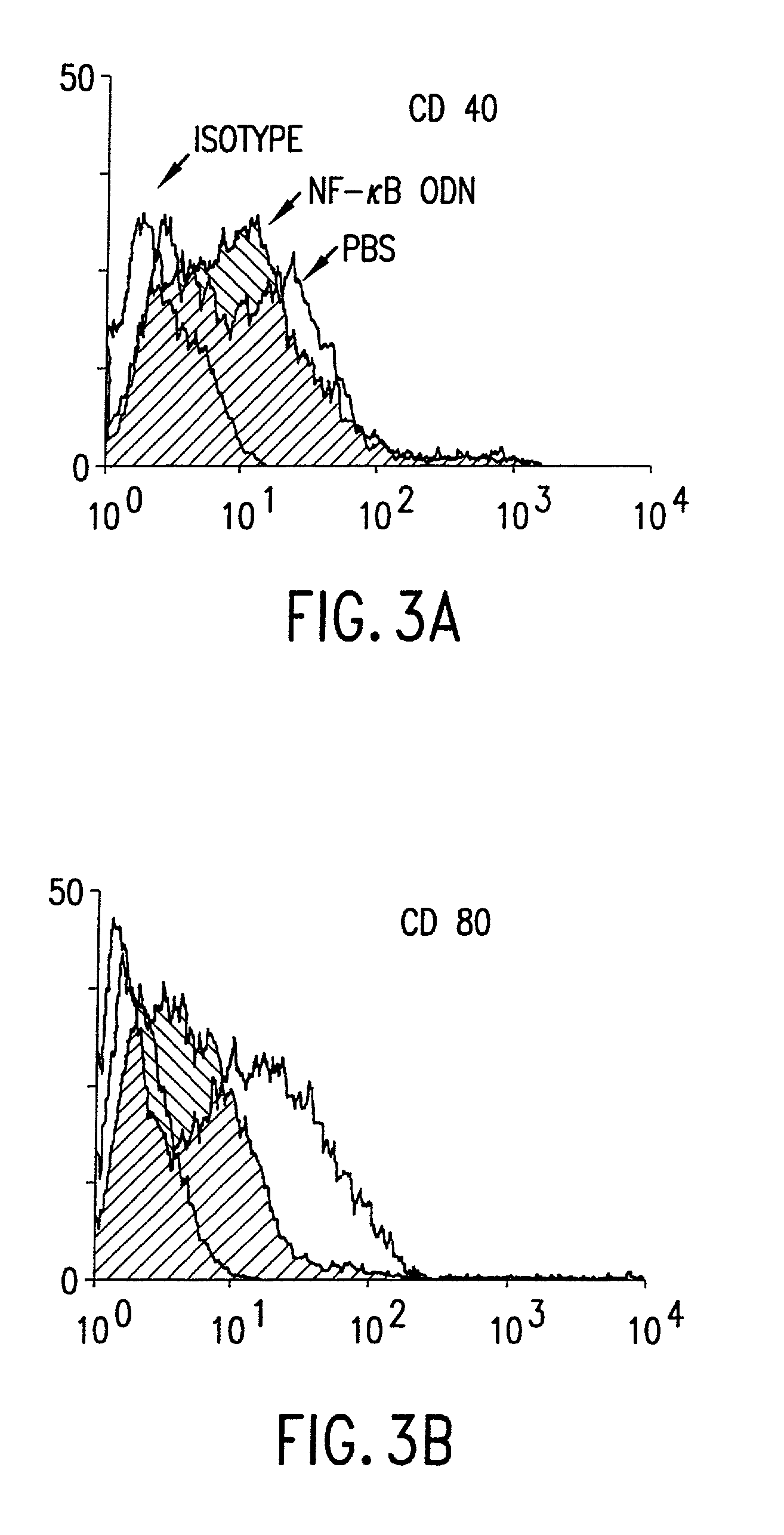Use of tolerogenic dendritic cells for enhancing tolerogenicity in a host and methods for making the same
a technology of dendritic cells and tolerogenicity, which is applied in the field of tolerogenic dendritic cells for enhancing tolerogenicity in a host, can solve the problems of increasing the number, prolonging the survival of infected dcs in the spleen of a host, and not being able to tolera
- Summary
- Abstract
- Description
- Claims
- Application Information
AI Technical Summary
Benefits of technology
Problems solved by technology
Method used
Image
Examples
example 1
[0067] DCs Effectively Incorporate NF-.kappa.B ODN
[0068] A Materials and Methods
[0069] Oligodeoxyribonucleotides (ODN): Double-stranded ODN decoys having two NF-.kappa.B binding sites were generated using equimolar amounts of single-stranded sense and antisense phosphorothioate-modified oligonucleotides containing two NF-.kappa.B binding sites as described by Bielinska et al., Science 250:997-1000 (1990) (designated NF-.kappa.B-ODN):
[0070] Sense oligonucleotide sequence with NF-.kappa.B binding sites in bold-faced type and underlined:
1 5' AGGGACTTTCCGCTGGGGACTTTCC 3' (SEQ ID NO:1).
[0071] Antisense oligonucleotide sequence with NF-.kappa.B binding sites in bold-faced type and underlined:
2 5' GGAAAGTCCCCAGCGGAAAGTCCCT 3' (SEQ ID NO:2).
[0072] As a control for non-specific sequence effects as well as aptameric effects that might have been induced by the GGGG quartet in the specific decoy, a double-stranded oligonucleotide consisting of a random sequence was used and designated ODN1 here...
example 2
[0083] NF-.kappa.B ODN Prevent DC Activation In Vitro
[0084] A. Materials and Methods
[0085] Nitric oxide production in cultures was determined by the Greiss reaction, a colorimetric assay for the stable end product, nitrite (NO.sub.2.sup.-). See Billiar et al., J. Exp. Med. 169:1467-1472 (1989), incorporated herein by reference. 100 .mu.l aliquots of supernatant were mixed with an equal volume of Greiss reagent (1% sulfanilamide, 0.1% napthylethylene diamine dihydrochloride, 2.5% H.sub.3PO.sub.4) and incubated at room temperature for 10 minutes. Absorbence at 570 nm was measured in an automated counter and compared to a standard curve generated using NaNO.sub.2. Experiments were performed in triplicate on two separate occasions.
[0086] B. Results
[0087] Bone marrow-derived DCs produce nitric oxide (NO), which is NF-.kappa.B transcription-dependent, in response to lipopolysaccharide (LPS) stimulation. See Lu et al., J. Immunol. 157:3577-3586 (1996). To determine whether NF-.kappa.B ODN ...
example 3
[0088] NF-.kappa.B ODN Effects on the Cell-Surface Expression of Co-Stimulatory Molecules
[0089] A. Materials and Methods
[0090] Expression of cell surface antigens on DCs was analyzed by cytoflourography, using an EPICS ELITE.TM. flow cytometer (Coulter Corporation, Hialeah, Fla.). Cells were stained with the primary hamster or rat monoclonal antibodies (mAbs) CD40, CD80 or CD86 (PharMingen, San Diego, Calif.) followed by fluorescein isothiocyanate (FITC)-conjugated goat anti-hamster or goat anti-rat IgG2a, as described previously by Lu et al., Transplantation 60:1539-1545 (1995), incorporated herein by reference. MHC class II was detected with biotin conjugated mAbs using FITC-streptavidin as the secondary reagent.
[0091] B. Results
[0092] Functional maturation of DCs is associated with upregulation of co-stimulatory signals (CD40, CD80 and CD86). DCs propagated in GM-CSF alone do not express high levels of these markers and are phenotypically and functional considered immature until ...
PUM
| Property | Measurement | Unit |
|---|---|---|
| time | aaaaa | aaaaa |
| temperature | aaaaa | aaaaa |
| time | aaaaa | aaaaa |
Abstract
Description
Claims
Application Information
 Login to View More
Login to View More - R&D
- Intellectual Property
- Life Sciences
- Materials
- Tech Scout
- Unparalleled Data Quality
- Higher Quality Content
- 60% Fewer Hallucinations
Browse by: Latest US Patents, China's latest patents, Technical Efficacy Thesaurus, Application Domain, Technology Topic, Popular Technical Reports.
© 2025 PatSnap. All rights reserved.Legal|Privacy policy|Modern Slavery Act Transparency Statement|Sitemap|About US| Contact US: help@patsnap.com



